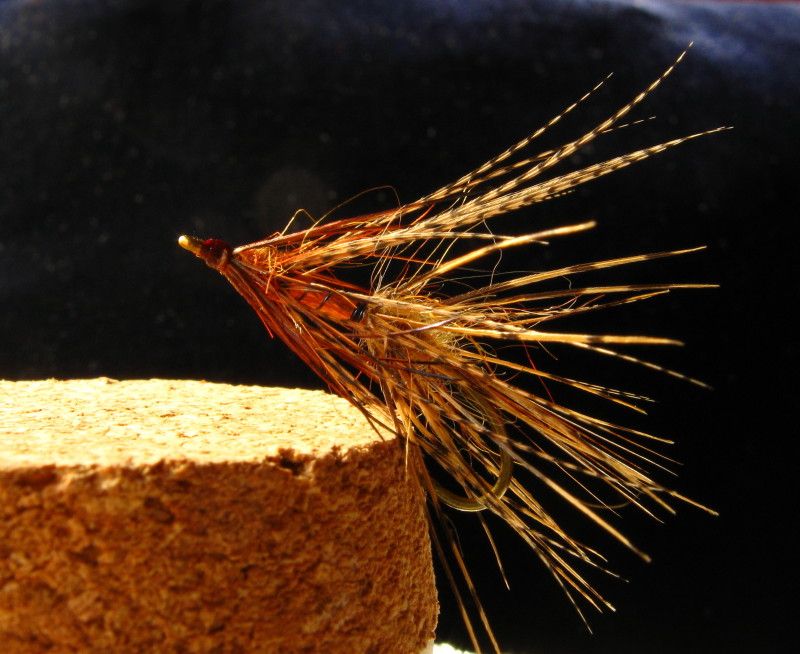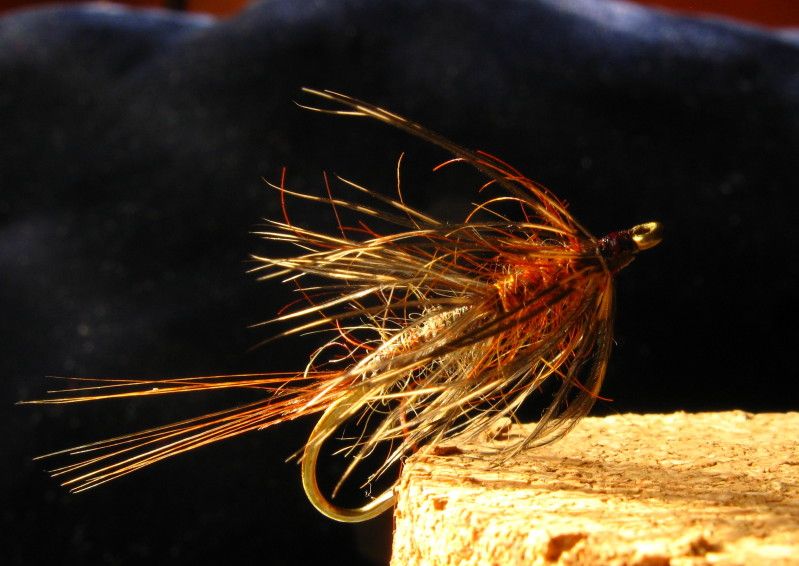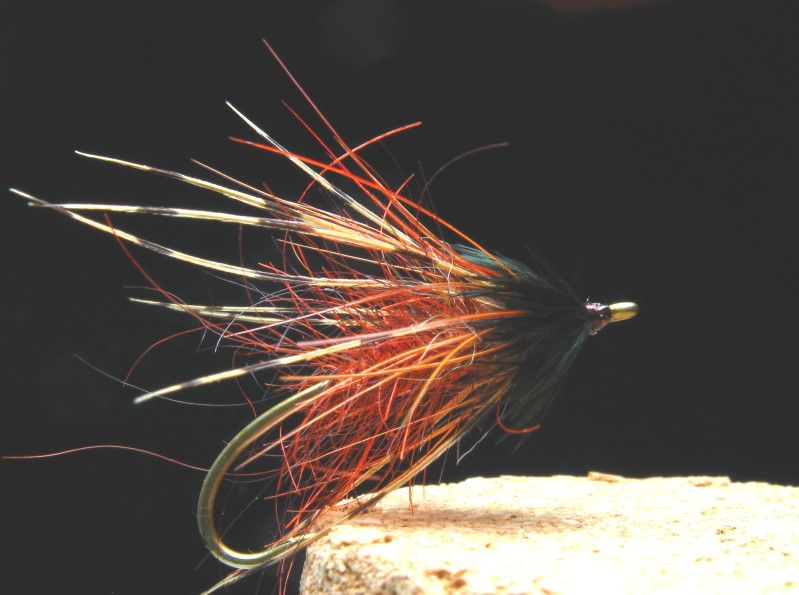Page 1 of 4
Composite hackle
Posted: Tue Jul 24, 2012 9:07 am
by CreationBear
I took a break last night from trying to figure out how to tie Bill a "grasshopper spey"

and decided to play around with what Jerry French calls "composite hackle." It's a technique that's mostly used for big salmon/steelhead flies, especially Intruders, but I was curious if it would scale to a "trout-sized fly," in this case a TMC200r #10. (What can I say: it ain't exactly Trico water around this part of the world.

)
As luck would have it, I've been obsessing lately on how to tie a softhackle "mini-craw:" I

The "composite" in this case is the rearmost hackle that was made by inserting "burned" GP tail fibers into a dubbing loop along with a bit of dubbing; the loop's then spun a wrapped, much the way you would with a hair-hackle. (The feather needs to have been burned first or otherwise have had its barbicels removed, though--otherwise the little hooks and dubbing fibers make a dog's breakfast of things.

)
At any rate, it's a way to get different kinds of material (e.g. GP or Amherst pheasant tail) on your hook without having to deal with the lumps formed by a too-thick rachis.
Re: Composite hackle
Posted: Tue Jul 24, 2012 11:38 am
by letumgo
CB - I marvel at your creativity! Splendid fly and convincing soft hackle crawfish imitation.
Re: Composite hackle
Posted: Tue Jul 24, 2012 11:58 am
by CreationBear
and convincing soft hackle crawfish imitation
You know, that's something I'm very curious about--the difference between "static" and "dynamic" imitations. An obvious comparison would be, say, a Gartside Sparrow--which, of course, doesn't much resemble a crayfish when it's lying in your hand, but in current the "pulse" of that fly's filoplume collar and tail makes it deadly. It will be very interesting to learn if the right parts of this fly move the right way...I might have to dig up all my old Wooly Bugger materials if they don't.

Anybody else think this might work better as a crayfish?

Of course, I can move both of them fast enough with my Tenkara rod it might not make a difference.

Re: Composite hackle
Posted: Wed Jul 25, 2012 8:01 am
by tie2fish
Both of these look as though they will attract a lot of interest from fish, especially in the next couple of months. Whether they get eaten as crayfish or hoppers, they look like something that a fish would relish.
Re: Composite hackle
Posted: Wed Jul 25, 2012 3:26 pm
by CreationBear
especially in the next couple of months.
Ha, thanks: I'm definitely going to tye up some "composite Sparrows" to see how they swim. Otherwise, I'm a confirmed LaFontainite (LaFontainist?

) when it comes to fly selection, especially this time of year--I think "Big Orange" works in autumn less because of October Caddis fluttering about and more because of its visibility under a multi-colored fall canopy.
Re: Composite hackle
Posted: Wed Jul 25, 2012 5:02 pm
by William Anderson
Whatever it's taken for, it's got a life force that will elicit an appetite or fear and trembling. I'd be excited to see that drifting in my lane. That technique with the GP tail is very cool.
Re: Composite hackle
Posted: Wed Jul 25, 2012 6:08 pm
by CreationBear
elicit an appetite or fear and trembling.
Ha, defintiely the piscine equivalent of Hemingway's "3-F Club"--fight, flee, or feed. (Although with these long-shank #10's, I suppose an
in flagrante delicto scenario wouldn't be out of the question, either.

)
Otherwise, I'm looking to forward to experimenting a bit more--it's really interesting how "motile" each feather fiber appears in water when it's taken off the rachis and propped up with a bit of dubbing.
Re: Composite hackle
Posted: Wed Jul 25, 2012 8:20 pm
by CreationBear
As mentioned, a "composite" Sparrow:

Re: Composite hackle
Posted: Wed Jul 25, 2012 9:12 pm
by William Anderson
Holy Crap! Now you've done it. Great assembly all around. Will you describe, in some detail your body and hackle technique. This one really comes together well.
Re: Composite hackle
Posted: Wed Jul 25, 2012 9:16 pm
by letumgo
WOW!
 and decided to play around with what Jerry French calls "composite hackle." It's a technique that's mostly used for big salmon/steelhead flies, especially Intruders, but I was curious if it would scale to a "trout-sized fly," in this case a TMC200r #10. (What can I say: it ain't exactly Trico water around this part of the world.
and decided to play around with what Jerry French calls "composite hackle." It's a technique that's mostly used for big salmon/steelhead flies, especially Intruders, but I was curious if it would scale to a "trout-sized fly," in this case a TMC200r #10. (What can I say: it ain't exactly Trico water around this part of the world.  )
) 
 )
)

